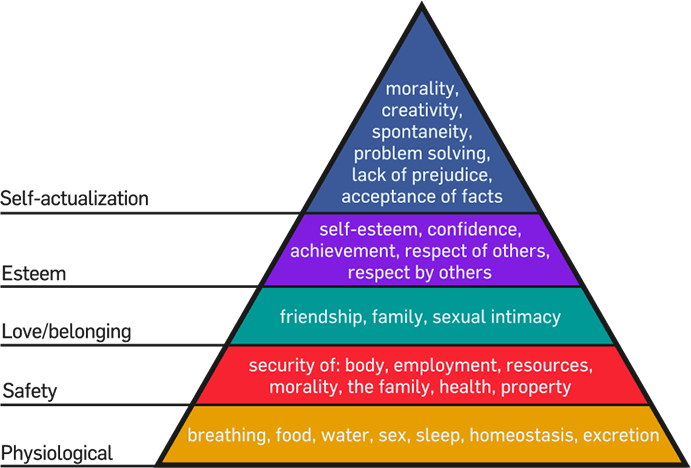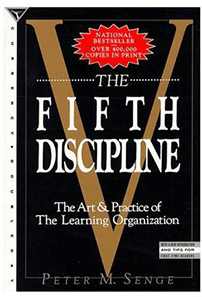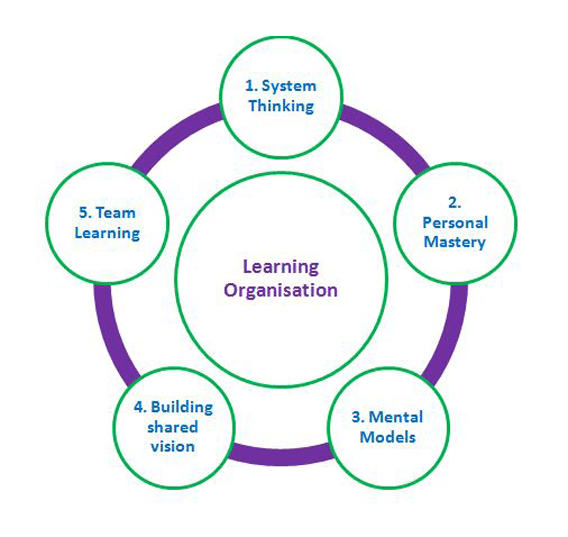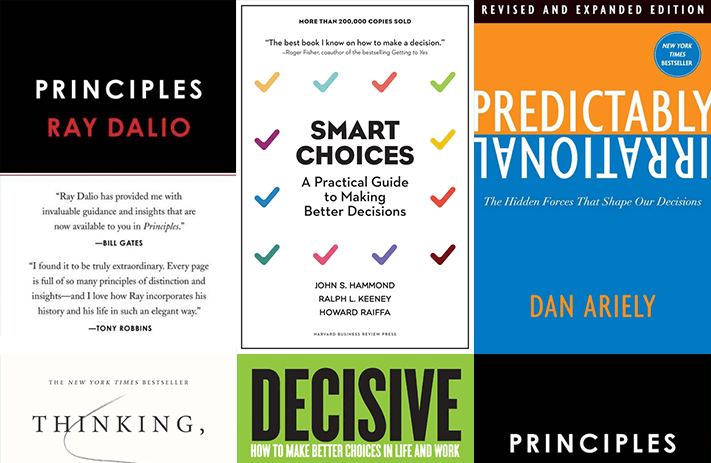
Click the button to start reading
Management Through History: How We Got Here, And Where We’re Going
Times have changed in the world of management. And definitely for the better! Better for employees, better for managers, and better for the organization. And as it’s still evolving, the future is looking pretty bright.
Rita Gunther McGrath describes the history of management in three eras – execution, expertise, and empathy. Execution refers to the period of science and bureaucracy, where mass production, specialization, standardization, and quality control thrived. When employees were seen more like machines who output than human beings who contribute. Expertise is the period where knowledge starts to accumulate, and motivation is understood better. Empathy is where we’re at now. We’re expecting managers to create complete and meaningful experiences for employees. It’s a pretty good place to be, considering where we came from.
Let’s dive a little bit deeper into the significant influencers and periods that represent the evolution of management and how we got to where we are today.
Management: A History
Scientific Management (late 1800s)
Frederick Taylor is often seen as the father of the Scientific Management period. Emerging in the late 1800s, Taylor focused on the system of management rather than the employee. Taylor believed that production efficiency could be attributed to specialization and division of labor. Employees were seen as specialized and replaceable components.
Let’s just say morale was probably pretty low in the average worker!
The Hawthorne Experiments (1932)
In 1932, Elton Mayo, a Harvard psychologist, conducted experiments at the Hawthorne Works of Western Electric Company. The study was on how characteristics of the work setting affected performance. When productivity increased, no matter what setting they altered or tinkered with, the researchers had to look a little deeper. Mayo realized that when researchers were present in the factory, workers were more productive. This was because they enjoyed receiving attention from the researchers and participating in the study. They were having such a great time that they wanted to cooperate with the researchers and produce the results they believed were desired.
This became known as the ‘Hawthorne effect’, which suggests that the attitude of workers toward managers influences their performance. Researchers began looking into managerial behavior and leadership, and the human relations movement was born. This movement advocated for supervisors to be trained to supervise, so they are able to motivate their teams and increase productivity.
The Hawthorne experiments paved the way for progress. Departing from studying management as a science, organizations and their managers started to recognize the importance of human characteristics.
Maslow’s Hierarchy of Needs (1950s)
In 1954, Abraham Maslow expanded on his hierarchy of needs in ‘Motivation and Personality’. The theory categorizes human needs into a pyramid, asserting that lower-level needs must be satisfied before humans can be motivated to fulfill their higher-level needs. His work had a major impact on how managers viewed employee motivation.

Maslow’s hierarchy applied in the workplace:
- Physiological: To fill the physiological needs, employees need appropriate salaries.
- Safety: Safety needs can be met by providing employees with job security, a safe and hygienic work environment, and benefits.
- Social: Social needs are met by teamwork and opportunities to socialize.
- Esteem: Meeting an employee’s need for esteem can be met by managers who appreciate and reward employees when deserved.
- Self-actualization: Self-actualization needs can be met by giving employees jobs that challenge them and utilize their skill-set
Learning Organization (1990s)
 In the 1990s, Peter Senge came along and developed the learning organization concept. He viewed the workplace as an organism. In his book, Senge describes the learning organization as a place with a group of people who create what they want to create: “where people continually expand their capacity to create the results they truly desire, where new and expansive patterns of thinking are nurtured, where collective aspiration is set free, and where people are continually learning how to learn together.”
In the 1990s, Peter Senge came along and developed the learning organization concept. He viewed the workplace as an organism. In his book, Senge describes the learning organization as a place with a group of people who create what they want to create: “where people continually expand their capacity to create the results they truly desire, where new and expansive patterns of thinking are nurtured, where collective aspiration is set free, and where people are continually learning how to learn together.”
These are the following characteristics that appear in learning organizations:
- Present continuous learning opportunities.
- Members utilize learning to achieve their goals.
- A connection between individual performance and the organization’s performance.
- A culture of questioning and conversation is fostered, making the workplace safe for employees to share openly and not be afraid to take risks.
- Embrace creative tension as a source of energy and renewal.
- Members are consistently aware of and interact with their environment.

The key to achieving this type of organization is within Senge’s five disciplines of creating a learning organization:
1. Shared Vision
A shared vision is when all employees are on the same page about the company goals and understand where the organization needs to go. The belief here is that employees who share the vision for the organization will actively participate in getting it there.
2. Mental Models
Mental models explain the assumptions and generalizations that people have which guide their behavior and decisions. In order to change mental models that may hinder someone, people need to be willing to reflect on their own behaviors and beliefs.
3. Team Learning
Team learning has two elements:
- Effective teamwork leads to results that are greater than what an individual could have accomplished on their own.
- Team members must be willing to change mental models and be open to learning from their teammates.
4. Personal mastery
In a learning organization, workers should be proactive – consistently continuing to learn and achieve. This isn’t about explicitly achieving for the organization – though that is an assumed residual benefit. It’s about defining what is important to us, seeing reality accurately, and pursuing continuous learning and improvement from there.
5. Systems thinking
Systems thinking in the workplace refers to looking at the organization holistically rather than as small unrelated parts. It implies that one should consider how their actions, behavior, and role affect those around them and the entire organization.
In a learning organization, the argument is that a better appreciation of the system will lead to more considerate and appropriate actions.
Daniel Pink (2009)
In his book ‘Drive’, Daniel Pink goes beyond the traditional motivational theories that support the idea that extrinsic factors (such as high pay and good benefits) motivate people. While they definitely play a role (no one wants to work for peanuts, no matter how great your boss is), intrinsic factors are actually responsible for human initiative. Intrinsic factors include autonomy, mastery, and purpose. For example, suppose you’ve ever had to deal with a boss who loved to micro-manage you at work. In that case, you probably know how vital autonomy and trust are.
Let’s get back to the future.
So, now that we have an overview of what has happened in the organization over all these years, how do we meet the needs of the current workforce today? How can we be good managers that the employees of tomorrow will actually want to work for?
Here are 4 ways you can be a great modern manager:
1. Be a leader
This might sound obvious, but it’s actually been a long-running debate on whether managers should also be leaders. The debate states managers delegate activities and direct a group of people, while leaders guide followers. This is just… silly. If you’re a manager of a team in the modern workforce, you need to lead. If you have been placed in a position of power without having earned followers, influence, and respect – success is unlikely.
Good managers are leaders who inspire, coach, and empower their employees. This is necessary for the modern organization, where every employee contributes to its success and long-term viability. Therefore, employees need to be inspired and encouraged to embrace their own entrepreneurial spirit.

2. Be inclusive
When important decisions need to be made, many managers believe that their insight is the only one that matters. This is holding them and their organization back.
Participative decision-making (PDM) is the opportunity for an employee to give their input on work-related matters. Employees at every level will have specialized knowledge about their work and how it’s best performed. So if a decision revolves around them in any minute way, why wouldn’t they have a voice? It makes them feel valued and respected.
Here’s some tips for implementing PDM:
- Discuss as a group (not just one-on-one employee-manager)
- Provide details and adequate information
- Foster an environment where people feel encouraged to share and appreciated when they do
- Make a decision together and implement it
3. Be vulnerable
It’s easy to assume that as a manager you should always hold it together. But employees need to get to see you be vulnerable in order to build deeper connections and trust. Embracing vulnerability in the workplace is essential for communication, collaboration, and discovery.

4. Be innovative
There will be times when the Managers of today and tomorrow must throw caution to the wind and challenge the status quo. Recent history has made it clear that the successful business of the future is the one that is capable of disrupting business-as-usual practice and exploiting opportunities today. This culture of innovation doesn’t come from nowhere: this culture must permeate the whole organization from the C Suite to the humble team manager.
Convention is not a manager’s friend. Insanity is the definition of doing something over and over and expecting the same results. By doing so, they will also encourage their team to be bold and unafraid of offering forward-thinking ideas.
As Andy Warhol once said, “Time changes things, but you actually have to change them yourself.” How you manage your team can make a huge difference. Try out these tips to be a manager of the future – you’ll be amazed at the impact you can have!
















